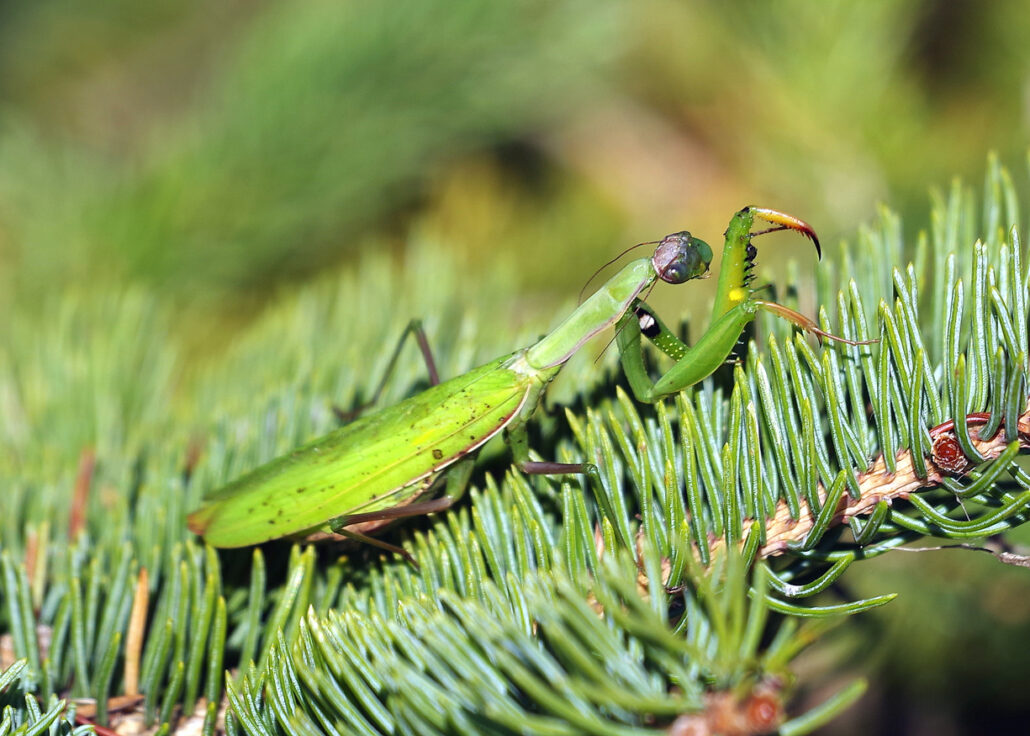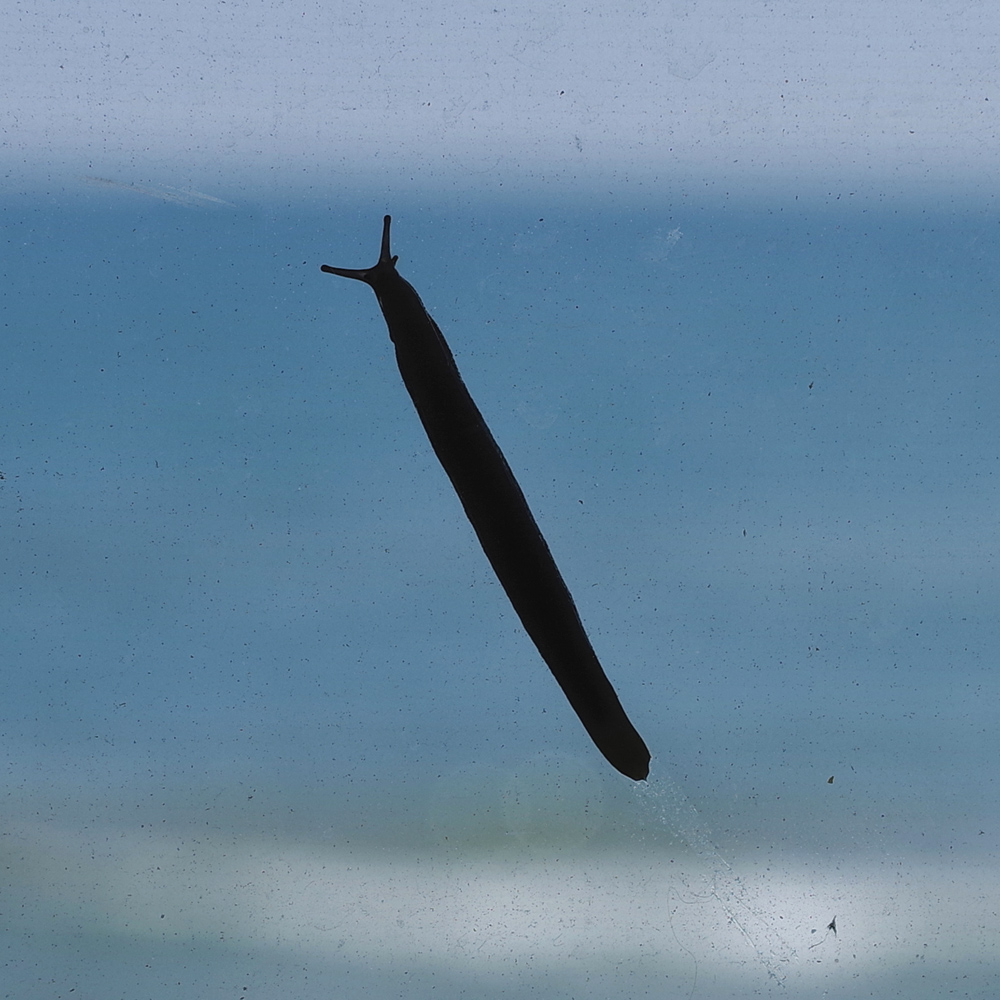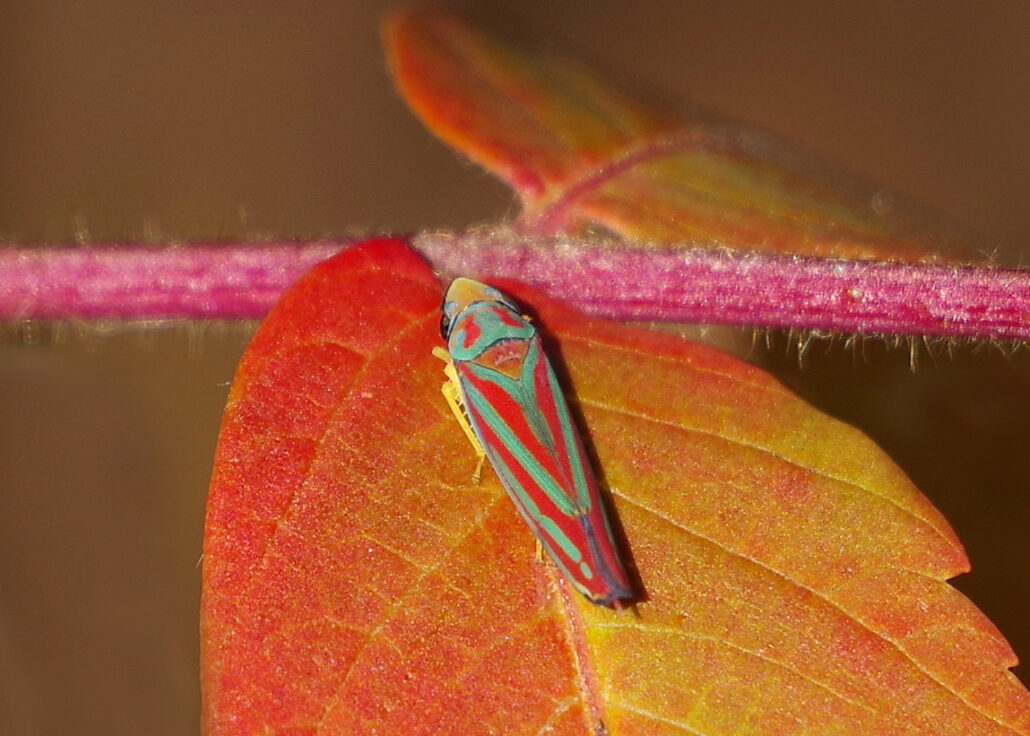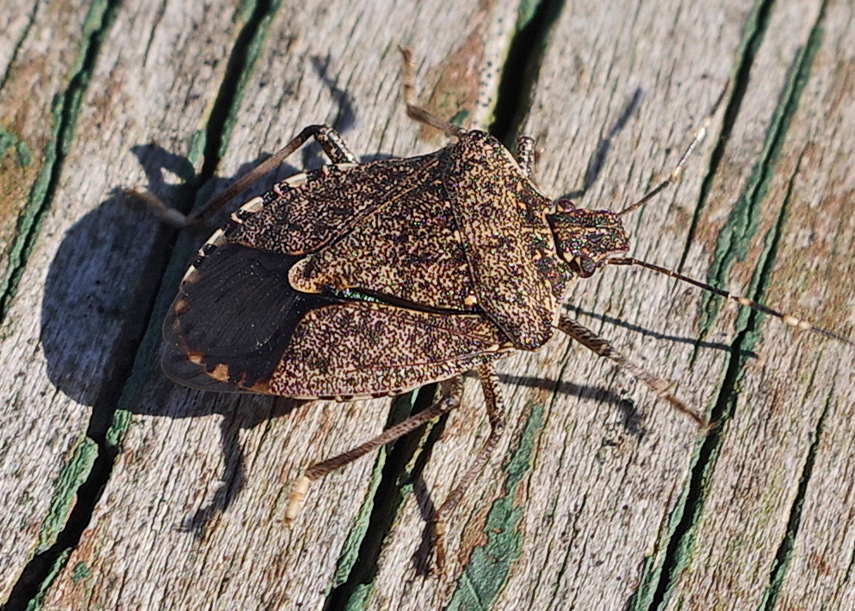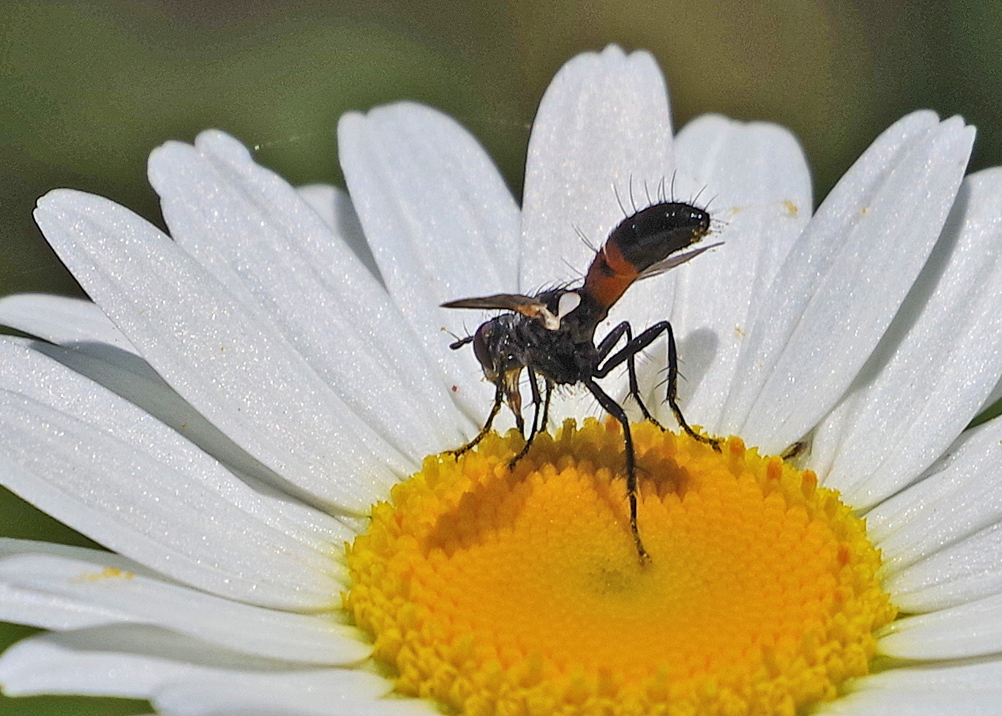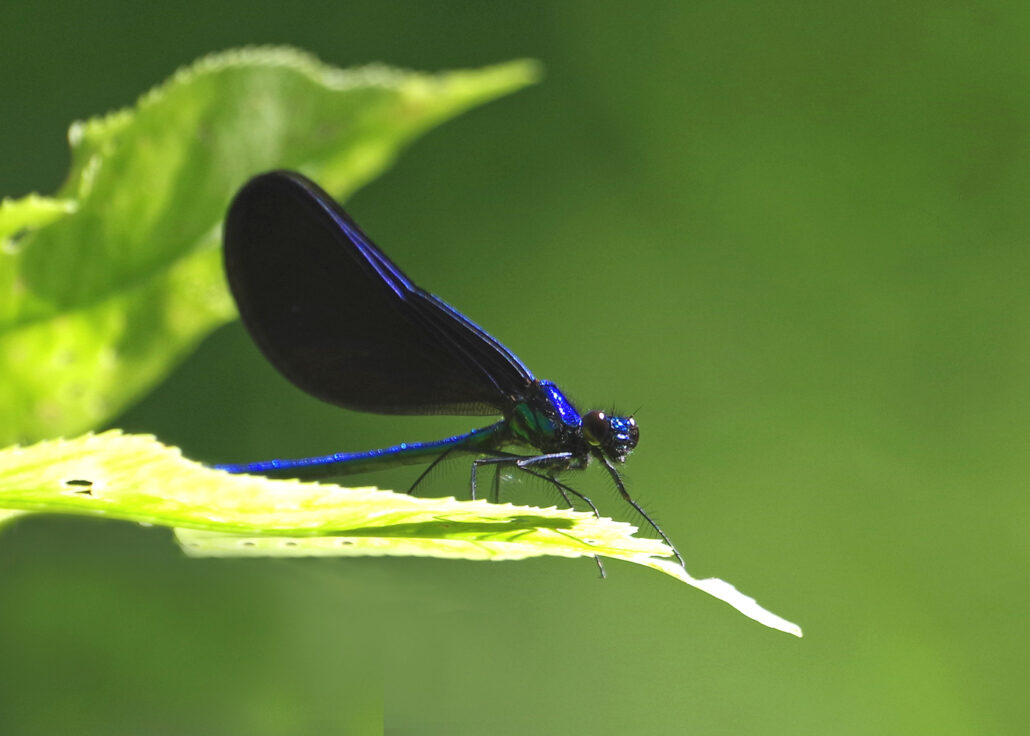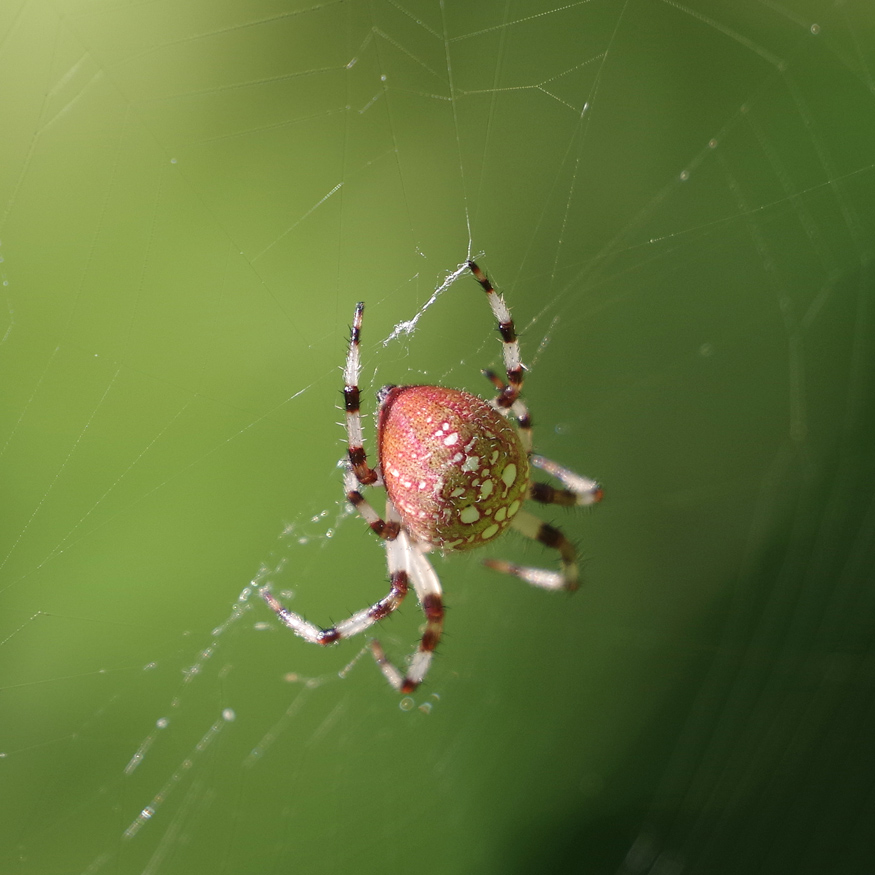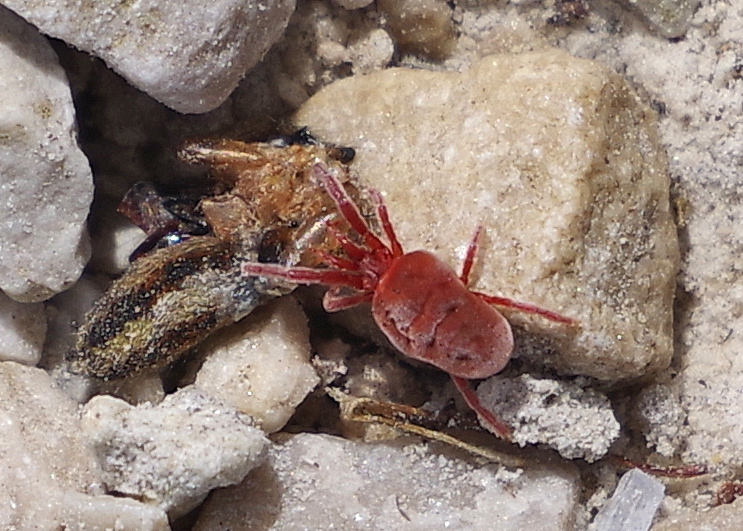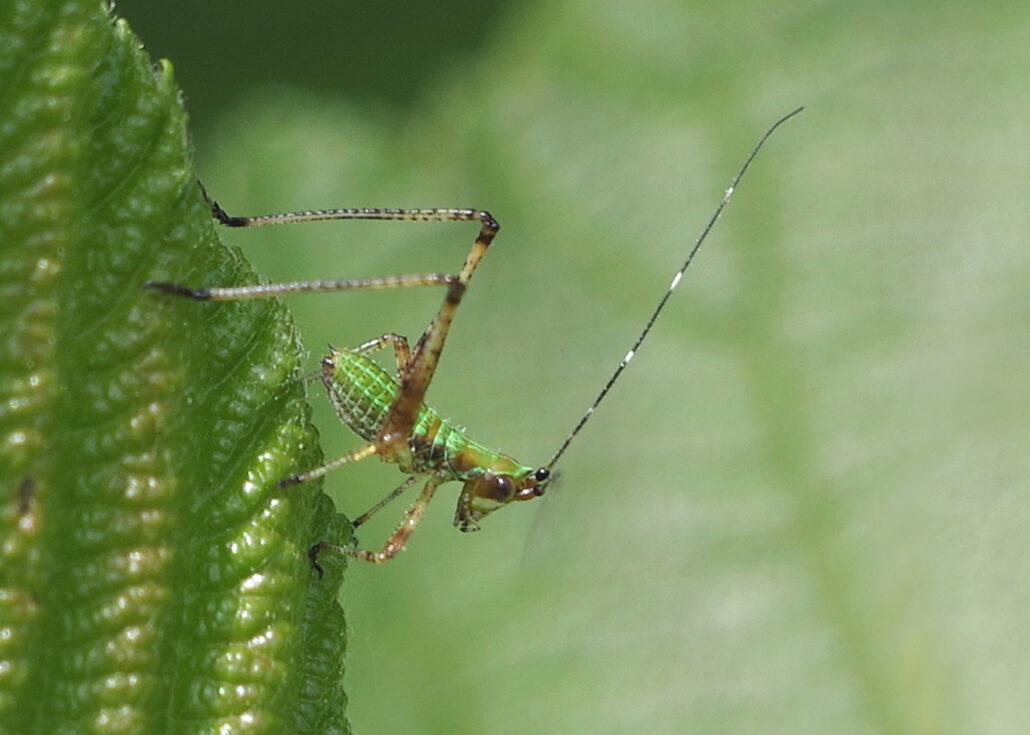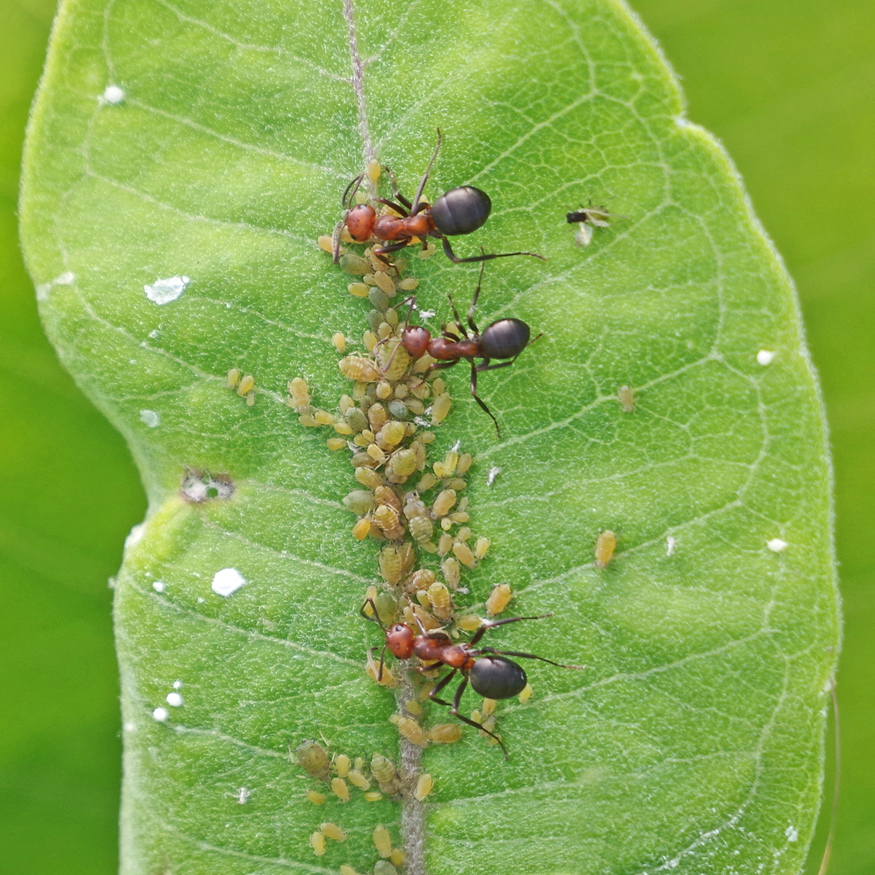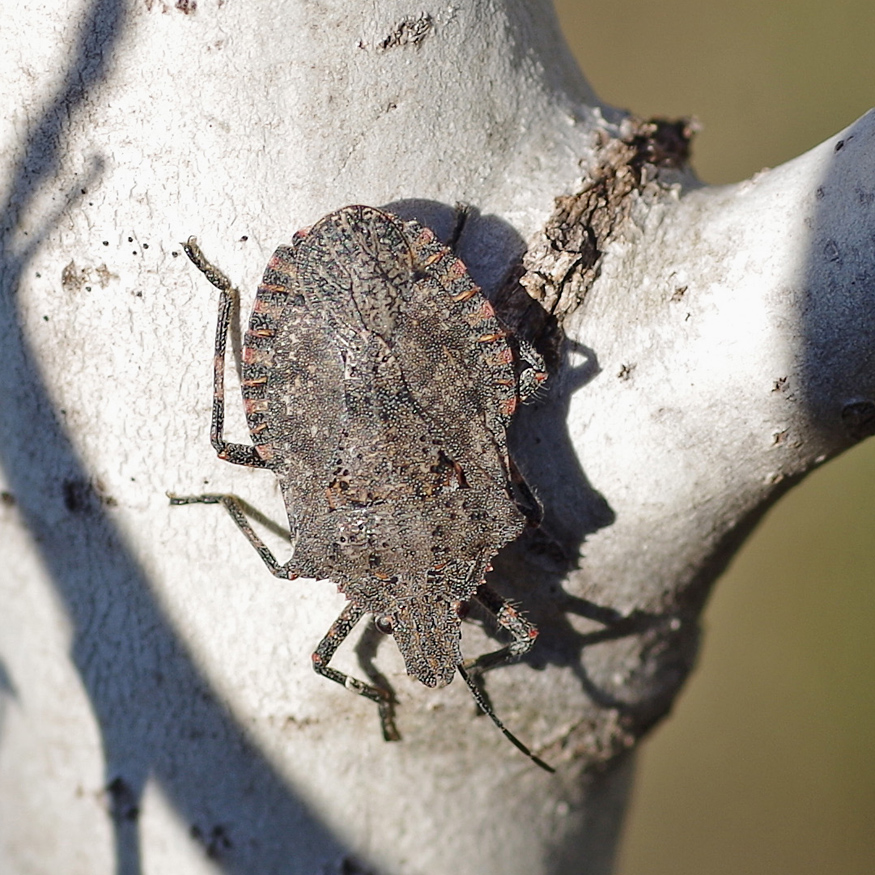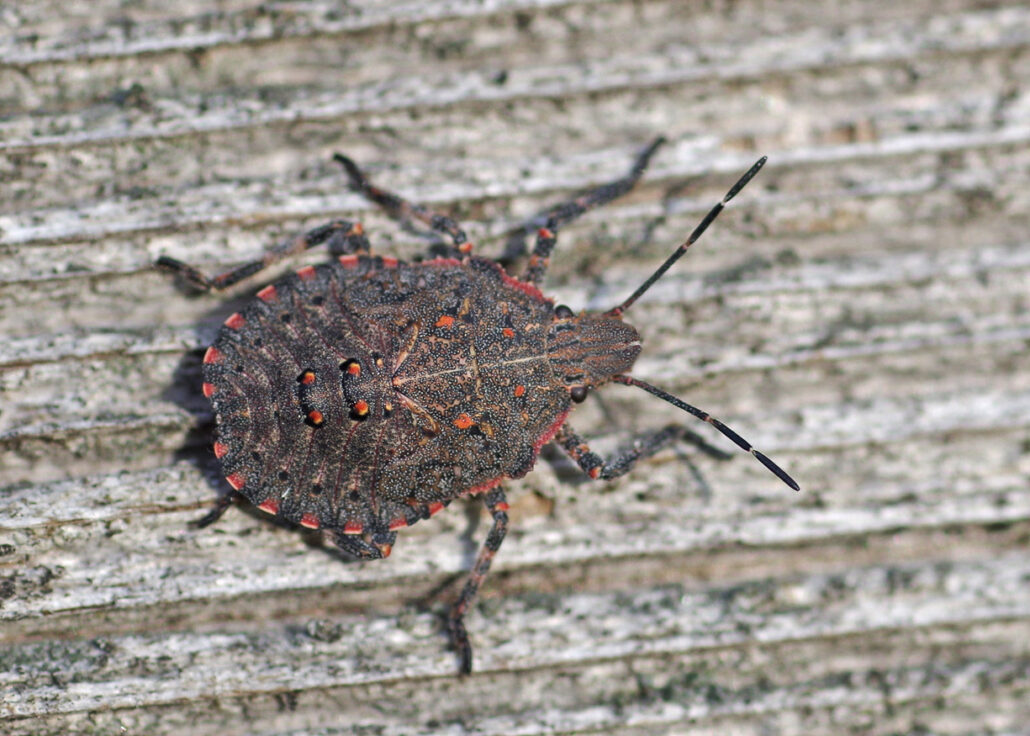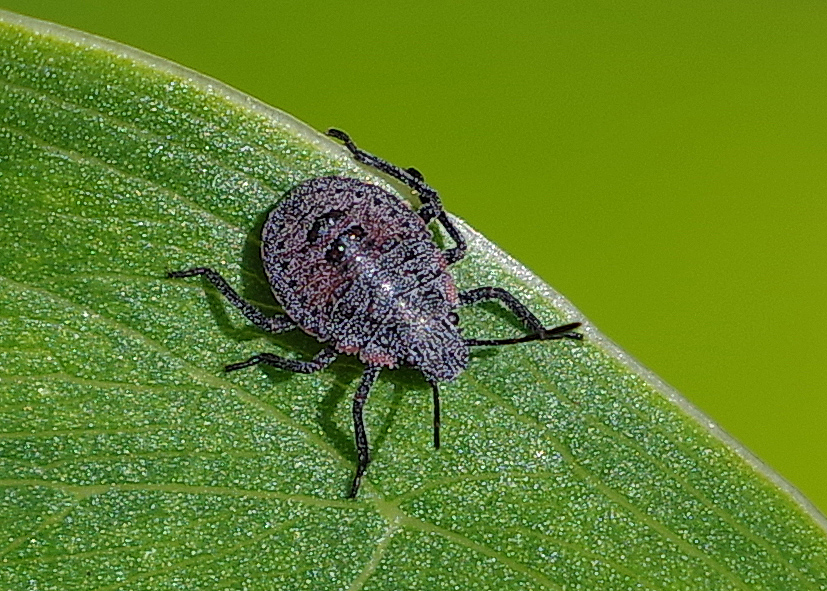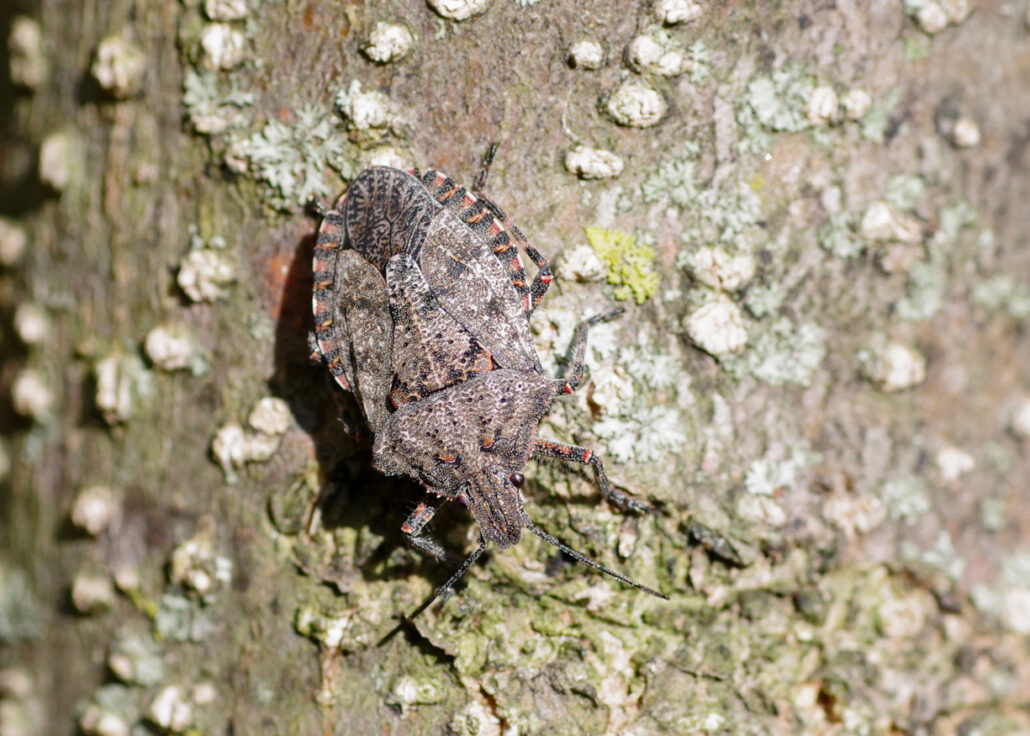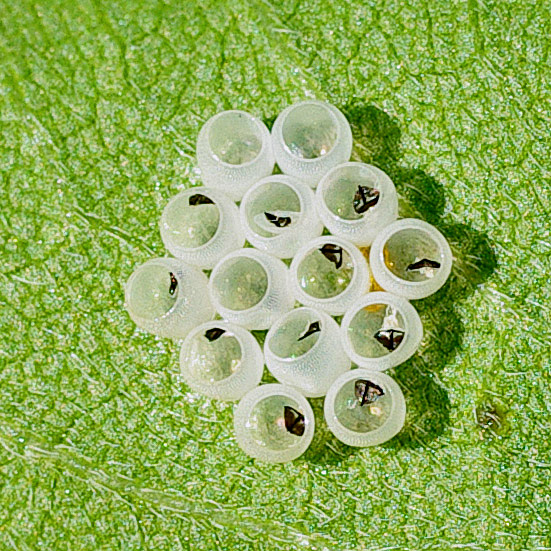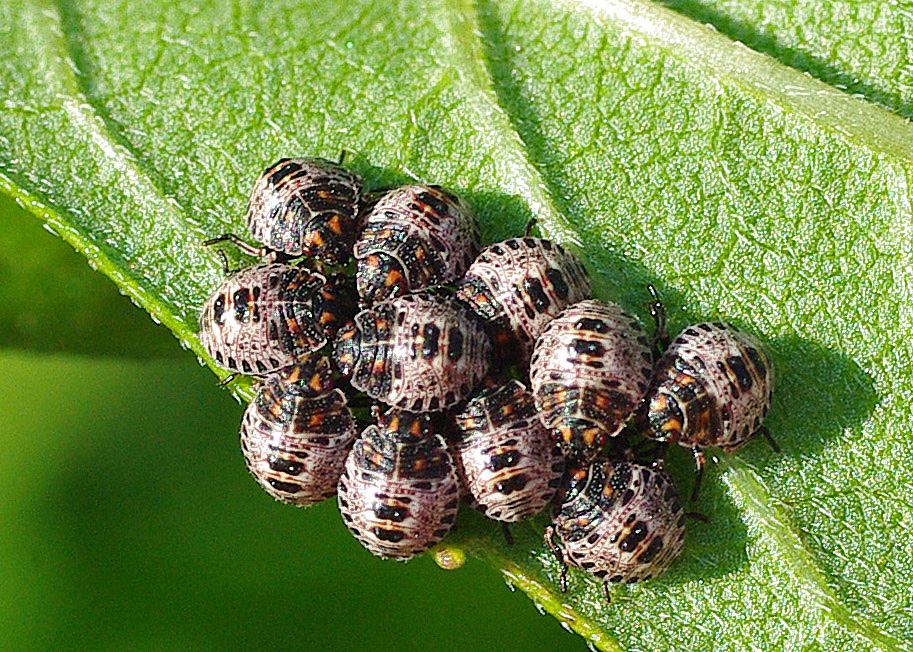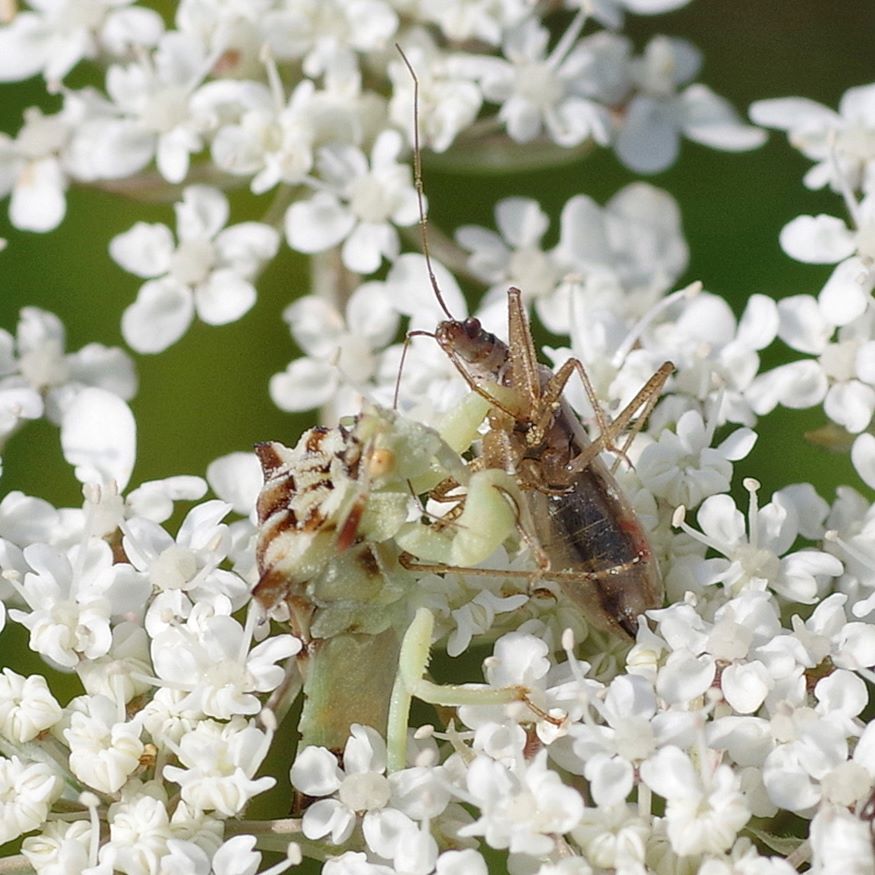
by Kate Redmond
Wildflower Watch – Cup-Plant Cosmos II
Greetings, BugFans,
The BugLady usually times the Wildflower Watch episodes so that BugFans can rush out and see the flower in bloom with its attendant bugs, but it’s the middle of January, and the BugLady is ready for spring. At least the Technicolor part of it (with apologies to the Cardinals and Blue Jays at the bird feeder but not to the Mourning Doves and Juncos).
Cup-plant (Silphium perfoliatum) is one of four Silphium species (prairie dock, compass plant, rosinweed, and cup-plant) that are typically seen in our tallgrass prairies. The size and shape and arrangement of leaves varies with the species, but all are tough and gritty leaves that are difficult for insects to chew on. They are in the Aster family, related to sunflowers. Our shortest Silphium, rosinweed, may grow four or five feet tall, but the flowering stalks of the other species may be well over six feet.
It gets its name from the way the clasping, opposite leaves are fused around the stalk at their bases, forming a cup. They’re called perfoliate leaves, and the plant looks like its square stem is growing through a series of single leaves.
Cup-plant was used medicinally for colds, rheumatism, fevers, stomach ailments, and back pains, on burns, to prevent nausea, and more. Young leaves were cooked (and were rated by one author as “acceptable greens”), and the resin was used as a chewing gum.
In Where the Sky Began, John Madson writes about compass plants that, “[Pioneers] found that [the compass plant] produced a pretty good brand of native chewing gum. Drops of clear sap exude from the upper third of the stem and solidify with exposure.
It has an odd, pine-resin taste that’s pleasant enough, but it must be firmed up before it’s chewed. A couple of summers ago I tried some of this sap while it was still liquid. It’s surely the stickiest stuff in all creation, and I literally had to clean it from my teeth with lighter fluid.”
[DO NOT TRY THIS AT HOME]
Insects land on plants to eat them, to rest for a bit, or to hunt for other insects, but there’s a fourth reason they land on cup-plant, and that’s to drink. After a rain, the cup contains water that attracts a variety of critters to drink and maybe to cool off. But despite what was once written in a prominent Midwestern seed catalog, the water in the cups does not digest the plant and animal debris that lands in it, like a pitcher plant does.
Cup-plant is what a gardening friend of the BugLady’s used to call, “a thug.” It can tolerate dry and rocky soils as well as rich, damp ones, and it “spreads vigorously” by both seeds and rhizomes (underground stems) – so much so that it’s considered an invasive in the Adirondacks and in some Northeastern states. Some people keep it in check by removing the flower heads before the seeds disperse, but its flowers are much appreciated by pollinators (especially, says the Xerces Society, “by honey bees, bumble bees, and big, showy butterflies ….. and leafcutter bees may use the hollow stems as nest sites”), and its seeds are eaten by birds. Because it is so easy to grow and grows so densely, it has been considered as a potential source of bio-fuel in recent years.
Cup-plants are a great place to find insects:

RED APHIDS come to cup-plants to eat (and be eaten). These are probably in the genus Urleucon, many of whose species feed on members of the Aster/Composite family. Multiple generations adorn the stalks and leaves of cup-plant, all wingless (unless, from an aphid’s point of view, things get really crowded and they need to disperse) and all are female (through the wonders of parthenogenesis – virgin birth) until they produce a winged generation with males at the end of the season. Watch the video and see “collective twitching and kicking response”, a.k.a. “CTKR” (possibly the BugLady’s new favorite behavior), https://bugoftheweek.com/blog/2022/6/13/cup-plant-feeds-brown-ambrosia-aphid-uroleucon-ambrosiae-which-in-turn-provides-dinner-for-lynx-spiders-lady-beetles-long-legged-flies-flower-flies-and-green-lacewings.

And so does the RED or POLISHED LADYBUG, which is one of the BugLady’s favorite ladybugs/lady beetles because of the wonderful pattern on its head and thorax https://bugguide.net/node/view/1075335/bgimage. It’s one of three species of “Spotless Ladybugs” in the genus Cycloneda. Ladybugs are serious aphid predators both as adults and larvae https://bugguide.net/node/view/710099/bgimage.
The BROCHYMENA, or Rough stink bugs, of recent BOTW fame, are plant-eaters. Their camouflage was designed for tree trunks, not green leaves.


Although this DADDY LONGLEGS looks like it came for the water, its camouflage will allow it to nab some unsuspecting, visiting insect.
A LAND SNAIL takes advantage of some water and maybe rasps the cup-plant’s leaves looking for algae, fungi, and leaf-bits to eat.


A DIMORPHIC JUMPING SPIDER subdued something that had very long, slender legs. Another daddy longlegs?
The CICADA is one of the Dog-day/Annual cicadas in the genus Neotibicen. Unlike the fancy Periodical cicadas https://bugguide.net/node/view/1973693/bgimage with their dramatic outbreaks, these are our everyday cicadas. They take several years to develop underground, but the generations overlap and so they are present every year (which is why they’re called “annual”). They get their liquid by poking their strong “beaks” into twigs and drinking the watery sap, so the cup was just a perch for it.

FORK-TAILED BUSH KATYDIDS are found in grasslands, woodlands, and thickets across most of North America from Mexico well north into Canada. There are some odd color forms in the southern parts of their range https://bugguide.net/node/view/1017342/bgimage. The BugLady loves their gem-like nymphs https://bugguide.net/node/view/789204/bgimage. They don’t yell “Katy-did” – in fact, they don’t say much at all, and they don’t say it very loudly https://soundcloud.com/lisa-rainsong/fork-tailed-bush-katydid-recorded-in-terrarium?in=malte/sets/crickets.


Not all of the cup-plant’s visitors are invertebrates – the BugLady often sees TREE FROGS cooling off in cup-plant water on hot summer days, and small birds drink water there..
This is the second in the Cup-plant Cosmos series (for the first installment, see https://uwm.edu/field-station/bug-of-the-week/cup-plant-cosmos/). The BugLady has also seen paper wasps, yellowjackets, a two-striped grasshopper, mirid plant bugs, a variety of flies, a land snail, and a spring peeper on its flowers and leaves.
For Northern BugFans, those colors are Green and Yellow. You remember them.
Kate Redmond, The BugLady
Bug of the Week archives:
http://uwm.edu/field-station/category/bug-of-the-week/







